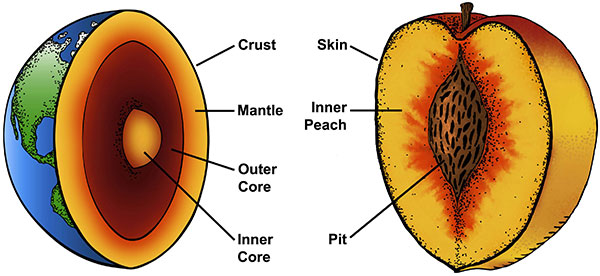Using Analogies to Support STEM Learning
Posted on

This post was written by Bryan Matlen, a Research Associate in the Science, Technology, Engineering, & Mathematics (STEM) program at WestEd. It was originally published May 9, 2017, and due to its popularity, we are highlighting it again.
When I was an undergraduate student, I enrolled in Science, Technology, Engineering, and Mathematics courses (commonly referred to as STEM). After many hours of lecture and study, I walked away with the following insight: STEM learning is hard.
This (not-so-revolutionary) insight sparked a fascination: Why is STEM learning so difficult? And how can we make STEM learning more effective and efficient?
For the past decade, my colleagues and I have been trying to improve students’ STEM outcomes. The first question we have to ask is: What makes STEM learning so hard?
One challenge in learning STEM concepts is that they involve complex relationships. The human circulatory system, algebraic problem solving, and force and motion are examples of difficult-to-grasp systems because of their relational complexity.
Because STEM concepts involve relationships, my colleagues and I have found a powerful way to support their acquisition is through the use of analogies (Vendetti, Matlen, Richland, & Bunge, 2015; Matlen, Jee, Vosniadou, & Ptouchkina, 2011).
Analogies are any domains that share relations. As an illustration, the atom and the solar system are analogous because larger elements (the sun and nucleus) cause smaller elements (the planets and electrons) to rotate around them. Reasoning by analogy is the process of using the relationships to connect entities within the domains: We map planets and electrons together because they each are the ones doing the rotating.
In my research, I’ve discovered that analogies direct students’ attention to important relationships that might otherwise be overlooked or misunderstood. For example, when learning about the Earth’s layers, many elementary school students have the misconception that the outer layer (the crust) makes up a large proportion of the Earth relative to its other layers. (In retrospect, this expectation is understandable — after all, we see the crust every day, and in relation to us, it is quite large.)
To help students understand the relative proportion of the crust to other layers, I’ve compared it to the layers of a peach: Just as the skin of a peach is thin and small relative to its other layers, so, too, is the Earth’s crust thin and small relative to its layers. This concept becomes easier to grasp with this analogy because 1) the source domain (the peach) is familiar to students, and 2) the source shares a key relationship with the to-be-learned concept that is highlighted through their comparison.

Analogies take advantage of a students’ rich prior knowledge, and by doing so, they allow for students to draw relational inferences. For instance, the student may reason that, because the center of the Peach is solid, perhaps the center of the Earth is solid as well.
Though the above inference is accurate, an analogy’s inferential power is also what can make it dangerous. I’ve learned that analogies can lead to invalid inferences if they are not carefully presented or well-understood.
To avoid errant inferences from analogies, my research suggests we can use the following cognitive supports to increase their effectiveness in the classroom:
- Explicitly indicate where analogies “break down” (i.e., where they are dissimilar); for example, the core of the Earth generates heat, whereas the pit of the peach does not
- Present analogies visually, keeping both parts of the analogy simultaneously in view to support the comparison-making
- Provide spatial cues, such as gestures, that move between the similar parts of the analogy
- Use different analogies to highlight different relationships; for example, one might use a boiling pot of water to support understanding of earth’s convection. In both cases, convection is caused by a central heat source
By introducing analogies in combination with these cognitive supports, we can improve STEM outcomes for all students, regardless of their age, background, or experience.
I leave you with a concluding analogy: learning STEM by analogy is like singing karaoke — though it may initially appear challenging, anyone can do it if the song/source is familiar, and if we know where it will break down.
To read more about improving STEM learning through analogy, visit the following links:
Matlen, Vosniadou, Jee, & Ptouchkina, 2011
https://csjarchive.cogsci.rpi.edu/proceedings/2011/papers/0662/paper0662.pdf
Vendetti, Matlen, Richland, & Bunge, 2015
https://onlinelibrary.wiley.com/doi/10.1111/mbe.12080/abstract
References
Matlen, B. J., Vosniadou, S., Jee, B., & Ptouchkina, M. (2011). Enhancing the comprehension of science text through visual analogies. In L. Carlson, C. Holscher, & T. Shipley (Eds.), Proceedings of the 34th Annual Conference of the Cognitive Science Society (pp. 2910–2915).
Vendetti, M. S., Matlen, B. J., Richland, L. E., & Bunge, S. A. (2015). Analogical reasoning in the classroom: Insights from cognitive science. Mind, Brain, and Education, 9(2), 100–106.
